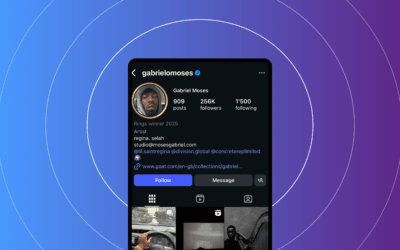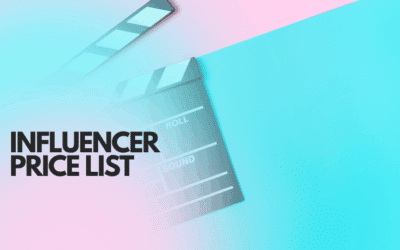Influencer Advertising Guidelines
If you run influencer campaigns, you need clear influencer advertising guidelines. These rules help you disclose paid partnerships, keep brand safety, and stay compliant with laws. This guide gives practical steps, platform rules, and copy-ready templates you can drop into your next campaign.
Why do these guidelines matter? They reduce legal risk, protect trust, improve campaign results, and keep teams aligned with platform rules. Think of influencer advertising guidelines as the umbrella for strategy and creative; inside it, disclosure, safety, and compliance live. This guide covers U.S. FTC guidance, platform rules, and niche rules for restaurants and food brands. Sources: FTC Endorsement Guides and business guidance (accessed September 2025); Instagram branded content help (accessed September 2025).
What are influencer advertising guidelines?
Influencer advertising guidelines are a formal set of policies that direct how brands, agencies, and creators disclose sponsored content, draft agreements, and stay compliant across platforms.
In practice, the scope covers:
- Disclosures: how to label and place “#ad,” “Paid partnership,” and similar notices.
- Contracts and compensation rules: agreements with deliverables, usage rights, and audits.
- Content standards: accuracy, claims, substantiation, and prohibited topics.
- Platform-specific formatting: use of disclosure tools and tags on Instagram, YouTube, TikTok, and blogs.
- Brand safety: vetting partners, risk monitoring, and escalation paths.
- Measurement and governance: KPIs, reporting cadence, and audits.
Relationship to broader influencer marketing guidelines: influencer advertising guidelines are the compliance and governance subset of the bigger strategy, creative briefs, and measurement. For baseline rules, consult the FTC Endorsement Guides and IAB resources. Sources: FTC Endorsement Guides and business guidance (accessed September 2025); IAB resources (accessed September 2025).
For more on this topic, see our related guide on influencer marketing guidelines (internal resource).
Source: FTC Endorsement Guides (accessed September 2025) — FTC Endorsement Guides.
Core components of influencer advertising guidelines
Disclosure and transparency
Disclosures must be clear, conspicuous, and easy to spot. They should not be buried in hashtags or captions. The goal is immediate recognition of the paid relationship.
Practical placement rules:
- Captions: put “Paid partnership with [Brand]” or “#ad” in the first line.
- Instagram Stories/Reels: use visible on-screen text and say it in the first 3 seconds.
- TikTok: add a text overlay and a pinned hashtag like #ad; state early in the clip.
- YouTube: mention in the first 30 seconds, use the paid-promotion toggle, and add “#ad” in the description.
- X/Twitter: include “#ad” or “Paid partnership” in the first tweet.
- Blogs/Newsletters: disclose in the first 1–2 paragraphs and near product claims.
Compliant example: “Paid partnership with BrandName — all opinions are mine.”
Non-compliant example: “Thanks BrandName!!! #sponsored” buried after a long hashtag chain.
Source: FTC Endorsement Guides (accessed September 2025) — FTC Endorsement Guides.
Compensation, contracts, and disclosure timing
Contracts must hardwire both influencer advertising guidelines and your broader influencer marketing guidelines. Include copy-ready clauses and timing rules to keep disclosures visible and compliant.
- Disclosure clause: “Influencer agrees to disclose any material connection to Brand clearly and conspicuously in all Content in accordance with FTC rules and Brand guidelines.”
- FTC compliance warranty: “Influencer warrants that all Content will comply with applicable laws and platform policies, including FTC endorsement guidelines.”
- Approval and revisions: “Brand has X business days to request edits; final approval rights are limited to legal/compliance and brand-safety issues.”
- Compensation and deliverables: spell out units, timelines, usage rights, whitelisting, and paid-media parameters.
- Indemnity and audit: “Influencer grants Brand the right to audit Content and performance for compliance.”
Timing rules:
- Always disclose at the point of view—before a user scrolls.
- Video: show on-screen disclosure within the first 3–5 seconds, readable for at least 3 seconds.
- Ephemeral content: keep disclosure visible for the entire clip or pin it.
See policy details on the FTC Endorsement Guides (accessed September 2025), YouTube paid promotion policy (accessed September 2025), and Instagram branded content help (accessed September 2025).
Source: YouTube paid promotion policy (accessed September 2025) — YouTube paid promotion policy.
Content standards and brand alignment
Your rules guard against false, misleading, or unsubstantiated claims. Avoid health or disease claims unless allowed by law, avoid deceptive comparisons, and ensure statements won’t mislead average consumers.
Definition: a specific claim like “low-calorie” or “clinically proven” that lacks reliable evidence. Require sources in captions/descriptions for verifiable claims, and add approvals for numeric claims, branding, and required disclosures.
Sample approval checklist:
- Verify descriptors and any numbers (nutrition facts).
- Review claims against substantiation files.
- Confirm required disclosures and links are present.
- Check visuals match the product customers receive.
- Ensure any comparative or superlative language is supported.
For food and health claims, reference the FDA’s food labeling guidance (accessed September 2025). For UK campaigns, check the ASA and CAP rules for misleading claims (accessed September 2025).
Source: FDA food labeling guidance (accessed September 2025) — FDA food labeling guidance.
Platform-specific requirements and format standards
Each platform has unique tools. Spell out must-dos for your team:
- Instagram: Branded Content tool with “Paid partnership” tag; disclose in first line; add on-screen text for video. See Instagram branded content help (accessed September 2025).
- YouTube: Use “contains paid promotion” disclosure; say it in intro; include disclosure in description. See YouTube paid promotion policy (accessed September 2025).
- TikTok: add text overlay and verbal mention where possible; include #ad and follow platform rules. See TikTok advertising policy (accessed September 2025).
- X/Twitter: include “#ad” or “Paid partnership” in the first tweet; avoid burying in a thread.
- Blogs: place a plain-language disclosure at the top and near claims.
Source: Instagram branded content help (accessed September 2025) — Instagram branded content help.
Brand safety and risk management
Brand safety guidelines turn risk into a scalable process. Build them into vetting and ongoing monitoring.
Vetting checklist (copy-ready):
- Identity verification: confirm legal name and entity.
- Content audit: review 12 months for hate, misinformation, illegal activity, or offensive content.
- Audience authenticity: check follower growth and engagement; run third-party scans.
- Conflict checks: look for controversies or conflicting endorsements.
- Safety fit: ensure age restrictions and category rules are respected.
- Disclosure and compliance clauses in contracts.
- Content do’s/don’ts and prohibited topics.
- Keyword monitoring for risky terms.
- Content archive and screenshot logs.
- Escalation: who to notify and when.
Red flags include sudden follower spikes, bot-like comments, or frequent pivots to risky categories.
Crisis playbook (short):
- Immediate: pause paid posts and whitelisting.
- Notify partner: template with issue and actions.
- Takedown: request removal/edit with deadlines.
- Communicate: brief public statement if needed and log steps.
See IAB resources for brand safety best practices (accessed September 2025) — IAB resources.
Measurement, reporting, and governance
Define KPIs and cadence to keep teams honest and efficient. Tie them to your guidelines and advertising rules.
Compliance KPIs:
- Disclosure rate = (posts with acceptable disclosure / total sponsored posts) × 100
- Compliance rate = (passes legal + brand checks on first review / total posts reviewed) × 100
- False claim incidents = count of posts needing modification or removal
- Time to remediation = average hours from flag to fix
Reporting cadence:
- Post-campaign report with metrics and screenshots.
- Monthly compliance audit (sample 20% of posts or min 10 posts).
- Quarterly governance review to update policy and training.
Governance roles:
- Brand compliance lead: owns policy, templates, audits.
- Legal counsel: answers precedents and high-risk questions.
- Agency account lead: enforces standards in briefs, timelines, QA.
- Talent manager: onboarding, tool access, ongoing checks.
Source: IAB resources (accessed September 2025) — IAB resources.
FTC influencer marketing disclosure guidelines
The FTC requires endorsements to be truthful and accompanied by clear, conspicuous disclosures of any material connection. Disclosures must be obvious and close to the endorsement; never buried in bios, links, or long hashtag walls.
Execution rules that work:
- Wording: “Paid partnership with [Brand],” “Sponsored by [Brand],” or “#ad.”
- Placement: in the first line of captions; for video, on-screen in the first 3–5 seconds and spoken when possible; for YouTube, toggle paid promotion and include disclosure in description.
- Avoid: vague terms like “thanks [Brand]” without context, disclosures in bios only, or hidden disclosures after hashtags.
For enforcement context and examples, see the FTC advertising and marketing hub (accessed September 2025) — FTC advertising & marketing hub.
Brand safety guidelines for influencer marketing
Brand safety guidelines are internal rules and tools to prevent risky content or partnerships. They combine vetting, monitoring, and escalation in one governance process.
10-point partnership vetting checklist
- Verify identity and entity details.
- Review 12 months of content for safety issues.
- Analyze audience authenticity and engagement quality.
- Check conflicts, controversies, and category fit.
- Confirm age-gating and regional sensitivities (e.g., alcohol).
- Require disclosure and compliance clauses in contracts.
- Align on content do’s/don’ts and prohibited topics.
- Set up keyword monitoring for risky terms.
- Implement content-archive and screenshot logs.
- Define escalation: who to notify, when, and how.
Scalable tools and automation can help:
- Content scanning and keyword monitoring for high-risk terms.
- Sentiment analysis and anomaly alerts (negative spikes).
- Archive systems to store drafts, live links, and takedown history.
Sample escalation matrix:
- Level 1 (minor breach): notify influencer within 24 hours; fix within 48 hours.
- Level 2 (major breach): compliance + legal within 12 hours; suspend media; remove within 24 hours.
- Level 3 (critical/reputational): executive alert within 4 hours; public statement if needed; pause activations.
Reference: IAB resources (accessed September 2025) — IAB resources.
Restaurant influencer marketing legal guidelines (niche best practices)
Restaurant campaigns face nutrition, allergen, and alcohol rules. Always check local rules for promotions and labeling.
Copy-ready rules:
- Nutrition and health claims: verify against nutrition data and cite in the caption.
- Allergen disclosures: mention allergens and cross-contact disclaimers where relevant.
- Alcohol promotions: respect age rules and licensing; avoid underage drinking depictions.
- Imagery authenticity: use real photos unless clearly disclosed as stylized.
Contract checklist for restaurant campaigns:
- Mandatory disclosure text and placement across formats.
- Allergen language for menu items or recipes.
- Photo authenticity clause and disclosure for stock imagery.
- Coupon terms (duration, geography, age restrictions).
- Takedown/cooperation clause within 24 hours for compliance issues.
For substantiation and allergens, consult FDA labeling guidance (accessed September 2025) and UK allergen guidance (accessed September 2025). When alcohol is involved, seek local counsel due to rules that vary by jurisdiction.
Source: FDA food labeling guidance (accessed September 2025) — FDA food labeling guidance.
Regional and jurisdictional considerations
Influencer advertising guidelines must reflect local rules. Use the strictest standard in cross-border campaigns.
United States (FTC): Baseline is clear, conspicuous disclosures and truthful endorsements. Enforcement can target brands and endorsers, so both share responsibility. Source: FTC Endorsement Guides (accessed September 2025) — FTC Endorsement Guides.
United Kingdom (ASA/CAP): Sponsored content must be obviously identifiable as advertising. Use “Ad” or “Advert” upfront; rules exist across platforms. Sources: ASA influencer guidance (accessed September 2025); CAP Code (accessed September 2025) — ASA influencer guidance, CAP Code.
European Union (UCPD): Unfair Commercial Practices Directive prohibits undisclosed ads. Cross-border campaigns should align with the strictest standard. Source: EU Unfair Commercial Practices Directive (accessed September 2025) — EU UCPD.
Other markets: Australia (ACCC), Canada (Competition Bureau). Always consult local counsel for country-specific ad labeling rules.
How to implement influencer advertising guidelines in your org
Use a phased plan to launch, test, and scale. Below is a practical path you can adapt fast.
Phase 0 — Policy drafting (2 weeks)
- Stakeholders: marketing lead, social lead, legal counsel, brand compliance lead, agency partner.
- Agenda:
- Define disclosure standards per platform and region.
- Approve contract clauses and templates.
- Align brand safety vetting steps and escalation paths.
- Set measurement KPIs and audit cadence.
- Decide on archiving and monitoring tools.
- See Influencer Marketing Strategies for 2025 to inform your phased rollout — Phase planning guide.
Source: Influencer Marketing Strategies for 2025 (external resource) — Influencer Marketing Strategies for 2025 (accessed September 2025).
Phase 1 — Pilot (1–2 campaigns)
- Run two campaigns using the new templates.
- Collect disclosures, compliance, and remediation data.
- Hold a post-mortem to refine the policy and guidelines.
Phase 2 — Training & technology (1 month)
- Build a short training for creators, agencies, and internal teams.
- Add disclosure checklists to CMS or templates.
- Implement content-archive system and basic keyword monitoring.
Phase 3 — Scale & governance (ongoing)
- Quarterly audits and legal reviews.
- Monthly compliance dashboard for stakeholders.
- Annual policy refresh or sooner if rules change.
Ownership and governance: Brand Compliance Lead, Legal Counsel, Agency Account Lead, and Talent/Influencer Manager each own parts of the process.
Source: Influencer Marketing KPIs Guide (external resource) — Influencer marketing KPIs guide (accessed September 2025).
Ownership matrix
Roles and responsibilities help keep your program compliant and scalable.
- Brand Compliance Lead: owns the guidelines, templates, audits.
- Legal Counsel: reviews high-risk claims and regional issues.
- Agency Account Lead: integrates standards into briefs, timelines, QA.
- Talent/Influencer Manager: onboarding, training, day-to-day checks.
Training slide bullets
- What counts as a material connection.
- Where to place disclosures on each platform.
- Top 5 claim types to avoid without substantiation.
- Screenshot and archive expectations.
- How to escalate a potential issue.
Quick-start templates, checklists, and samples
Short disclosure phrases (use as-is):
- “Paid partnership with [Brand]” — preferred plain-language format.
- “Sponsored by [Brand].”
- “#ad” — use at the start of captions or tweet; avoid burying.
Contract clause snippet:
- Disclosure warranty: “Influencer agrees to disclose any material connection to Brand clearly and conspicuously in all Content.”
- Compliance warranty: “Influencer warrants that all Content will comply with applicable laws and platform policies, including FTC endorsement guidelines.”
- Approval clause: “Brand may request edits for legal/compliance or brand-safety issues within X business days.”
- Indemnity/audit: “Influencer will cooperate with compliance audits and takedown/edit requests.”
Pre-campaign checklist (10 items):
- Confirm disclosure wording and placement by platform.
- Add platform disclosure tools (e.g., paid-promotion toggles).
- Insert required links and disclaimers in briefs.
- Vet influencer identity and past content.
- Run audience authenticity scans.
- Approve substantiation files for claims.
- Align on creative do’s/don’ts and prohibited topics.
- Set up screenshot and archiving.
- Define KPIs (disclosure rate 100%, compliance ≥95%).
- Confirm escalation contacts and timelines.
Post-campaign audit checklist:
- Disclosure present and prominent in every post.
- Screenshots archived with timestamps and URLs.
- Engagement parity vs. organic benchmarks noted.
- Any flagged content removed/edited with log entries.
- Summary KPIs: disclosure rate, compliance rate, remediation time.
- Lessons learned and policy updates recorded.
Downloadable package: downloadable checklist and editable doc bundles. Examples include “influencer-advertising-guidelines-disclosure-checklist.pdf.”
FAQ
What are the 4 M’s of influencer marketing?
Answer: Method, Message, Media, Measurement. They guide campaign approach, creative direction, channel choice, and KPIs.
What are the 3 R’s of influencer marketing?
Answer: Reach, Relevance, Resonance. Use them to vet creators by audience size, fit, and impact.
Do influencers legally have to disclose ads?
Answer: Generally yes if there is a material connection. Disclosures must be clear at the start of sponsored content per regulators like the FTC.
What are the FTC guidelines for influencer marketing?
Answer: Endorsements must be truthful and accompanied by clear disclosures of material connections. Disclosures should be obvious and close to the endorsement.
How should brands vet influencers for compliance?
Answer: Check identity, audit recent content, verify audience authenticity, add disclosure clauses, and monitor with tools.
How do you measure compliance with influencer advertising guidelines?
Answer: Track disclosure rate, compliance rate, and time-to-remediation; run monthly audits and add a false-claim count.
Conclusion
Influencer advertising guidelines are the backbone of trustworthy, high-performing creator programs. They protect your brand, keep teams compliant, and make campaigns easier to scale. Fold these rules into your influencer marketing guidelines, train every partner, and audit consistently.
Resources and further reading:
- FTC Endorsement Guides and business guidance: FTC Endorsement Guides (accessed September 2025)
- FTC advertising & marketing hub: FTC hub (accessed September 2025)
- UK ASA influencer guidance: ASA influencer guidance (accessed September 2025)
- CAP Code: CAP Code (accessed September 2025)
- YouTube paid promotion policy: YouTube paid promotion (accessed September 2025)
- Instagram branded content help: Instagram Branded Content (accessed September 2025)
- TikTok advertising policy: TikTok policy (accessed September 2025)
- EU Unfair Commercial Practices Directive: EU UCPD (accessed September 2025)
- FDA food labeling guidance: FDA labeling (accessed September 2025)
- UK FSA allergen guidance: FSA allergen guidance (accessed September 2025)
- IAB resources: IAB (accessed September 2025)
Influencer Marketing Articles
Actionable tips to get more success with influencer marketing campaigns
Who is Gabriel Moses?
Discover Gabriel Moses, the London-born artist blending fashion, music, and heritage into striking visual narratives. From Dior to Johnnie Walker, see why he’s shaping culture.
Who is Mika Ninagawa?
Discover Mika Ninagawa, Tokyo’s visionary photographer and film director celebrated for her vivid art, bold storytelling, and win at Instagram Rings 2025.
Influencer Price List: What Brands Pay in 2025 & 2026
An influencer price list is the working set of fees and terms creators (or their agents) provide — the baseline for budgeting, negotiating, and forecasting influencer campaigns.






